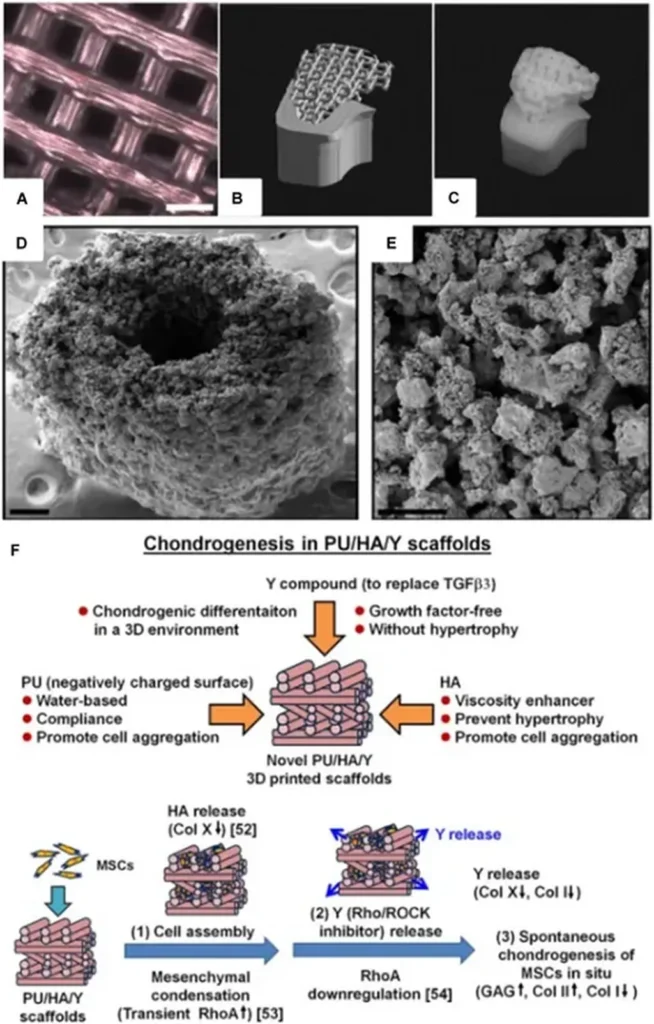In a groundbreaking development poised to reshape the landscape of tissue engineering and regenerative medicine, researchers at the Center for Nanoscience and Technology, Anna University in Chennai, India, have unveiled a novel approach to creating biomimetic scaffolds. Led by Nivaz S R, the team has developed porous composite scaffolds using polyglycerol sebacate (PGS) and gelatine, with an optional addition of hydroxyapatite (HAP) for enhanced bone regeneration capabilities. This innovation, detailed in a recent study published in ‘Materials Research Express’ (which translates to ‘Expressions of Materials Research’), promises to revolutionize the way we approach soft and hard tissue engineering.
The research focuses on the creation of nanostructured porous materials that closely mimic the natural extracellular matrix, providing an optimal environment for cell growth and proliferation. “The key to our success lies in the uniform integration of PGS elastomer and gelatine within the composite,” explains Nivaz S R. “By optimizing the ratio of gelatine to PGS, we achieved a material that offers the perfect balance of bioactivity, biodegradability, and elasticity required for soft tissue engineering applications.”
The team’s innovative approach involves a process of desolvation and lyophilization, resulting in a composite material with desirable properties. For soft tissue applications, the optimal ratio of gelatine to PGS was found to be 2:1. To enhance the material’s suitability for bone regeneration, the researchers introduced hydroxyapatite (HAP) into the composite mixture prior to lyophilization. The resulting HAP-GPGS composite closely simulates the microenvironment of native bone extracellular matrix, with PGS providing flexibility, and gelatine and hydroxyapatite promoting cell adhesion and osteoconduction.
The study’s findings demonstrate that both GPGS and HAP-GPGS scaffolds are non-cytotoxic and conducive to the proliferation of MG63 (human osteoblast) and 3T3 (mouse fibroblast) cell lines. The nanostructured surface and bioactive composition of the scaffolds promote healthy cell–material interactions, making them ideal for a range of applications. While the GPGS composite is particularly suited for wound healing and soft tissue engineering, the HAP-GPGS scaffold shows significant potential for bone regeneration.
The implications of this research extend far beyond the laboratory. The development of these biomimetic scaffolds opens up new possibilities for the energy sector, particularly in the realm of bioenergy and bioprocessing. As the demand for sustainable and renewable energy sources continues to grow, the need for innovative materials that can support and enhance biological processes becomes increasingly important. The GPGS and HAP-GPGS composites, with their highly biocompatible and osteoconductive nature, offer a promising solution for a wide range of applications.
Moreover, the simplicity and low cost of the fabrication process, coupled with the ability to fine-tune the material’s properties without changing the scaffold preparation protocol, make these composites an attractive option for commercialization. As the energy sector continues to explore the potential of bioenergy and bioprocessing, the development of these novel scaffolds could pave the way for more efficient and sustainable energy production.
In the words of Nivaz S R, “Our research represents a significant step forward in the field of tissue engineering and regenerative medicine. The development of these biomimetic scaffolds opens up new avenues for exploration and innovation, with the potential to transform the way we approach energy production and utilization.”
As the world continues to grapple with the challenges of climate change and the need for sustainable energy solutions, the work of Nivaz S R and his team at the Center for Nanoscience and Technology offers a glimmer of hope. Their innovative approach to scaffold design and fabrication has the potential to revolutionize the energy sector, paving the way for a more sustainable and environmentally friendly future. With the publication of their findings in ‘Materials Research Express’, the stage is set for the widespread adoption and commercialization of these groundbreaking materials.

